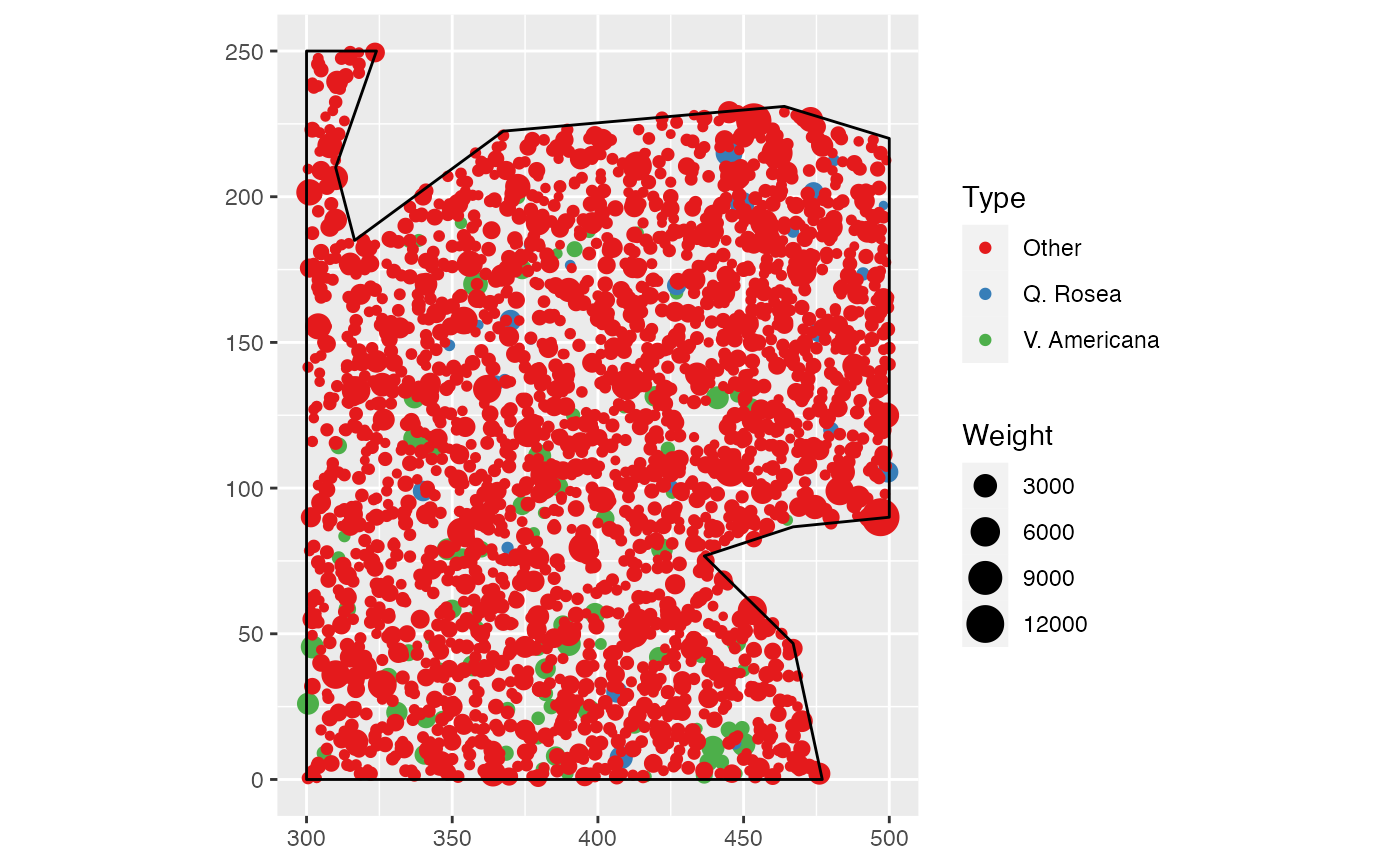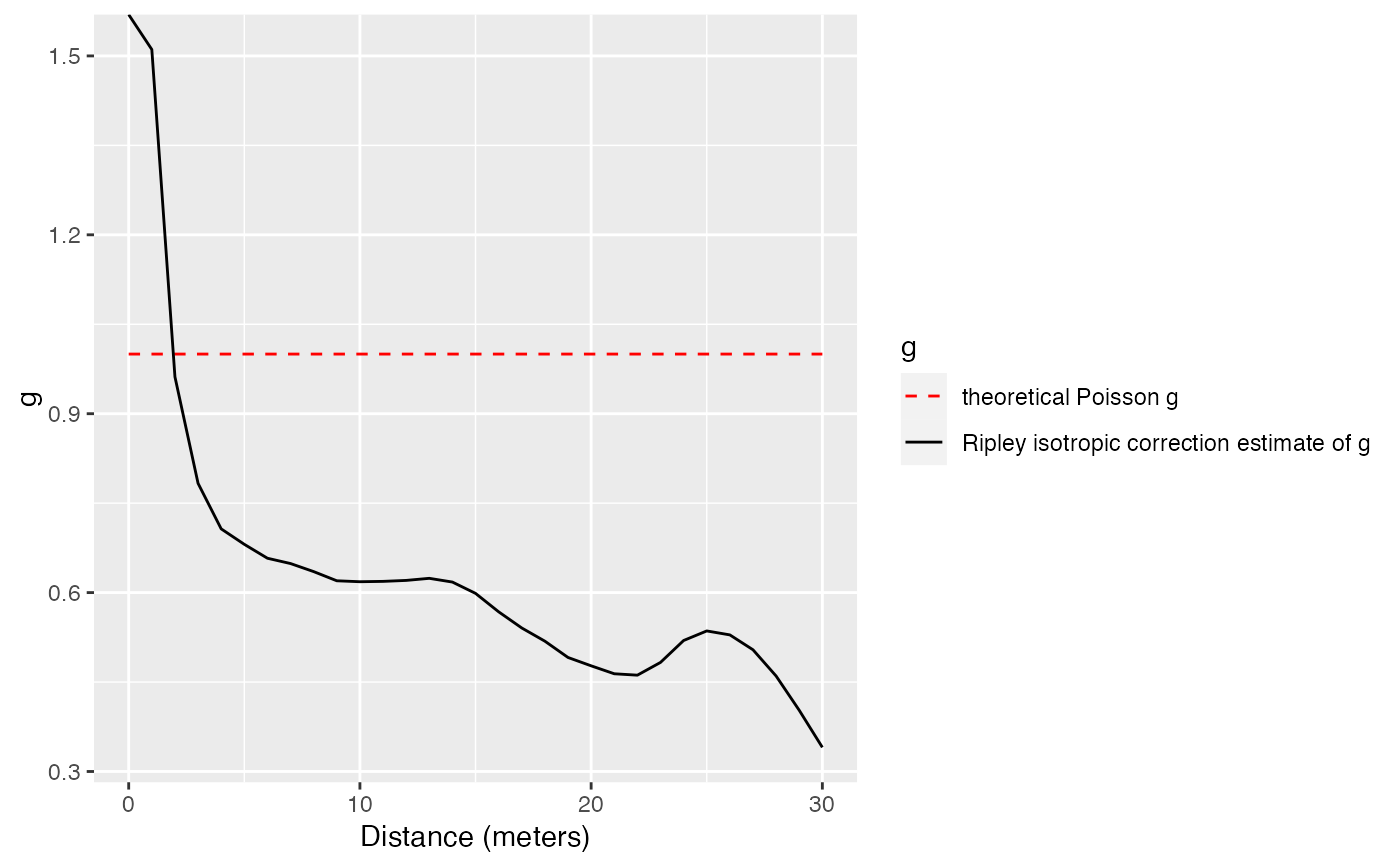
Estimation of the g function
ghat.RdEstimates the g function
Arguments
- X
A weighted, marked, planar point pattern (
wmppp.object).- r
A vector of distances. If
NULL, a sensible default value is chosen (512 intervals, from 0 to half the diameter of the window) following spatstat.- ReferenceType
One of the point types. Default is all point types.
- NeighborType
One of the point types. Default is all point types.
- CheckArguments
Logical; if
TRUE, the function arguments are verified. Should be set toFALSEto save time in simulations for example, when the arguments have been checked elsewhere.
Details
The computation of ghat relies on spatstat function sewpcf.
The kernel estimation of the number of neighbors follows Stoyan and Stoyan (1994, pages 284–285).
References
Stoyan, D. and Stoyan, H. (1994) Fractals, random shapes and point fields: methods of geometrical statistics. John Wiley and Sons.
Examples
data(paracou16)
autoplot(paracou16)
 # Calculate g
r <- 0:30
(Paracou <- ghat(paracou16, r, "Q. Rosea", "V. Americana"))
#> Function value object (class ‘fv’)
#> for the function r -> g(r)
#> ................................................................
#> Math.label Description
#> r r distance argument r
#> theo g[pois](r) theoretical Poisson g(r)
#> iso hat(g)[iso](r) Ripley isotropic correction estimate of g(r)
#> ................................................................
#> Default plot formula: .~r
#> where “.” stands for ‘theo’, ‘iso’
#> Recommended range of argument r: [0, 30]
#> Available range of argument r: [0, 30]
#> Unit of length: 1 meter
# Plot
autoplot(Paracou)
# Calculate g
r <- 0:30
(Paracou <- ghat(paracou16, r, "Q. Rosea", "V. Americana"))
#> Function value object (class ‘fv’)
#> for the function r -> g(r)
#> ................................................................
#> Math.label Description
#> r r distance argument r
#> theo g[pois](r) theoretical Poisson g(r)
#> iso hat(g)[iso](r) Ripley isotropic correction estimate of g(r)
#> ................................................................
#> Default plot formula: .~r
#> where “.” stands for ‘theo’, ‘iso’
#> Recommended range of argument r: [0, 30]
#> Available range of argument r: [0, 30]
#> Unit of length: 1 meter
# Plot
autoplot(Paracou)
